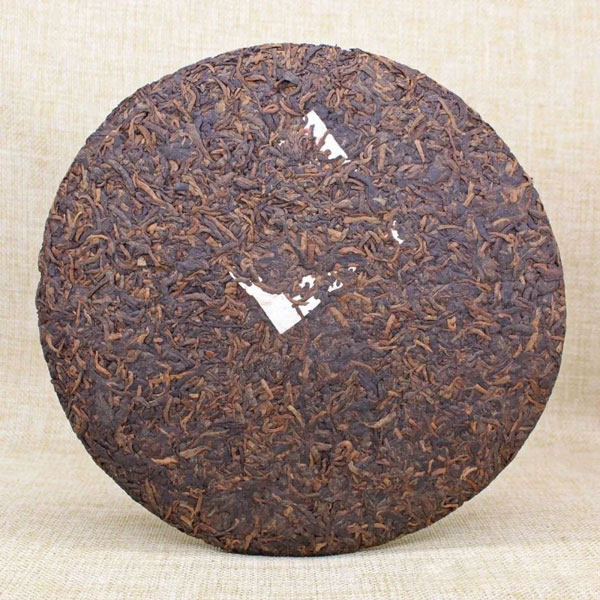According to the fermentation degree, processing technology and storage characteristics of tea, the following teas are suitable for long-term storage, and under suitable conditions, they can become more fragrant as they age, and their quality will gradually improve:

◆ Types of tea suitable for long-term storage
1. White tea

- Features: Simple process (only withering and drying), retaining more active enzymes and antioxidant components.
- Storage life: Properly stored, it can be stored for more than 10 years. There is a saying among the people that "one year of tea, three years of medicine, seven years of treasure"
- Flavor changes: With the change of time, the nature of tea changes from cool to warm, and the taste is sweeter and smoother, which may produce unique aromas such as jujube fragrance and medicinal fragrance.
- Representative varieties: Baihao Yinzhen, Bai Mudan, Shoumei.
2. Black tea (including Pu'er tea)

Features: Post-fermented tea, microorganisms participate in continuous transformation, and have great aging potential.
Storage life:
- Raw Pu'er: can be stored for more than 10 years, or even decades, with the peak period of transformation being 15-30 years.
- Ripe Pu'er: no clear shelf life, the older it gets, the more fragrant it becomes.
Other black teas (such as Anhua black tea and Liubao tea): suitable for long-term storage, with a mellower taste.
Flavor changes: the tea soup changes from green to mellow, the aroma changes from fresh to aged, and the soup color deepens.
3. Oolong tea (partially roasted tea)

- Features: semi-fermented tea, the roasting process can fix the aroma, and long-term storage requires annealing before drinking.
- Storage life: Aged rock tea (such as cinnamon and narcissus): after 3-5 years of storage, the heat fades, the tea soup is more mellow, and may have a fruity or woody aroma.
- Traditional charcoal-roasted Tieguanyin ("Lao Tie"): needs to be stored for more than 5 years, the tea becomes warm and has a mellow taste.
Note: Fragrant oolong tea (such as Tieguanyin) pays attention to freshness and is not suitable for long-term storage.
4. Black tea

- Features: fully fermented tea, high degree of fermentation, and more durable in storage.
- Storage period: It can be stored for 3-5 years under suitable conditions. The flavor may be more mellow, but it is easy to sour after long storage.
- Representative varieties: Dianhong, Jinjunmei.

◆ Key conditions for long-term storage
Temperature: Control at 20-25℃ to avoid high temperature accelerating oxidation.
- Humidity: ≤60%, desiccant (such as quicklime, silica gel) or charcoal can be used to absorb moisture and replace regularly.
- Avoid light: Use opaque containers or light-proof packaging to prevent direct sunlight from destroying the tea ingredients.
- Sealing: Reduce contact with air and odors to maintain the original aroma (composite bags, tea cans or vacuum nitrogen filling method are recommended).
- Clean environment: Stay away from odor sources (such as kitchens, spices) to prevent tea from absorbing odors.

◆ Storage method recommendation
- Desiccant method: Place quicklime, silica gel or charcoal to absorb moisture, suitable for daily home storage.
- Low temperature refrigeration method: Refrigerate for short-term storage (2-5℃), freeze for long-term storage (below 0℃), and seal to prevent odor contamination.
- Vacuuming and nitrogen filling method: Use double-layer aluminum foil composite bags to evacuate air and then fill with nitrogen to seal, suitable for long-term storage of precious tea.
- Pottery jar method: Use quicklime bags to absorb moisture, suitable for storing black tea, Pu'er, etc.
◆ Situations to avoid
- High temperature and high humidity: It is easy to cause tea to mold and damage the quality.
- Light: Destroys the pigment and aroma components of tea, affecting the color and taste.
- Odor pollution: Tea is easy to absorb odors, so it needs to be stored separately and avoid mixing with spices, cosmetics, etc.

Summary of tea suitable for long-term storage: white tea, black tea (including Pu'er), some roasted oolong tea (such as aged rock tea, Laotie), and black tea.
Key principles: high-quality raw materials, good craftsmanship, and proper storage. If you want to collect, it is recommended to choose products with good brand reputation and regularly check the storage environment to ensure that the tea leaves are kept in the best condition during the transformation process.
Tea is not only a spiritual gift from nature, but also a code that connects ancient and modern tea culture. Every cup of tea soup tells the legend of mountains, rivers, years, and humanities.

%20--%3e%3c!DOCTYPE%20svg%20PUBLIC%20'-//W3C//DTD%20SVG%201.1//EN'%20'http://www.w3.org/Graphics/SVG/1.1/DTD/svg11.dtd'%3e%3csvg%20version='1.1'%20id='图层_1'%20xmlns='http://www.w3.org/2000/svg'%20xmlns:xlink='http://www.w3.org/1999/xlink'%20x='0px'%20y='0px'%20width='256px'%20height='256px'%20viewBox='0%200%20256%20256'%20enable-background='new%200%200%20256%20256'%20xml:space='preserve'%3e%3cpath%20fill='%23FFFFFF'%20d='M194.597,24.009h35.292l-77.094,88.082l90.697,119.881h-71.021l-55.607-72.668L53.229,232.01H17.92%20l82.469-94.227L13.349,24.009h72.813l50.286,66.45l58.148-66.469V24.009z%20M182.217,210.889h19.566L75.538,44.014H54.583%20L182.217,210.889z'/%3e%3c/svg%3e)




